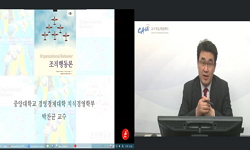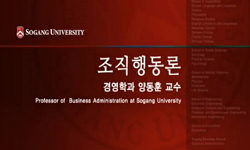Social identity theory (SIT) has proven to be a popular topic ofdiscourse in academia. Scholars in the field of sport managementhave predominantly focused on team identification and howsport fans align with their favorite teams. However, recent develo...
http://chineseinput.net/에서 pinyin(병음)방식으로 중국어를 변환할 수 있습니다.
변환된 중국어를 복사하여 사용하시면 됩니다.
- 中文 을 입력하시려면 zhongwen을 입력하시고 space를누르시면됩니다.
- 北京 을 입력하시려면 beijing을 입력하시고 space를 누르시면 됩니다.


Identities in the Sport Workplace: Development of an Instrument to Measure Sport Employee Identification
한글로보기https://www.riss.kr/link?id=A107049371
-
저자
Brent D. Oja (Northern Colorado) ; Jordan R. Bass (University of Kansas) ; Brian S. Gordon (University of Kansas)
- 발행기관
- 학술지명
- 권호사항
-
발행연도
2020
-
작성언어
English
- 주제어
-
등재정보
KCI등재후보,SCOPUS,ESCI
-
자료형태
학술저널
-
수록면
262-284(23쪽)
-
KCI 피인용횟수
0
- DOI식별코드
- 제공처
-
0
상세조회 -
0
다운로드
부가정보
다국어 초록 (Multilingual Abstract)
Social identity theory (SIT) has proven to be a popular topic ofdiscourse in academia. Scholars in the field of sport managementhave predominantly focused on team identification and howsport fans align with their favorite teams. However, recent developments have explored how sport employees identify with theirsport organizations. To date, the maturation of theory involvingsport employee identification (SEI) has only reached the conceptual stage. This study is intended to fill the void in the literatureby creating a psychometric instrument to specifically measure SEI.
The results indicate that SEI is a composite of two distinct butrelated factors, named sport affinity and collective enhancement.
The instrument was subjected to and passed various reliabilityand validity tests. The appropriateness of using team identification variables to measure sport employees’ social identities is alsodiscussed. Lastly, theoretical and practical implications for the useof the instrument are provided.
참고문헌 (Reference)
1 Tabachnick, B. G., "Using multivariate statistics" Pearson 2013
2 Wells, J. E., "Tunover intentions: Do leadership behaviors and satisfaction with the leader matter?" 17 (17): 23-40, 2011
3 Doherty, A. J., "Transformational and transactional leadership in interuniversity athletics management" 10 (10): 292-310, 1996
4 Chalip, L., "Toward a distinctive sport management discipline" 20 (20): 1-21, 2006
5 Fink, J. S., "Theory development in sport management : My experience and other considerations" 16 (16): 17-21, 2013
6 Dwyer, B., "The tie that blinds? Developing and validating a scale to measure emotional attachment to a sport team" 18 (18): 570-582, 2015
7 Costa, C. A., "The status and future of sport management : A Delphi study" 19 (19): 117-142, 2005
8 Tajfel, H., "The social psychology of intergroup relations" Brooks/Cole Publishing Company 33-47, 1979
9 Funk, D. C., "The psychological continuum model : A conceptual framework for understanding an individual's psychological connection to sport" 4 (4): 119-150, 2001
10 Wann, D. L., "The positive social and self-concept consequences of sports team identification" 15 (15): 115-127, 1991
1 Tabachnick, B. G., "Using multivariate statistics" Pearson 2013
2 Wells, J. E., "Tunover intentions: Do leadership behaviors and satisfaction with the leader matter?" 17 (17): 23-40, 2011
3 Doherty, A. J., "Transformational and transactional leadership in interuniversity athletics management" 10 (10): 292-310, 1996
4 Chalip, L., "Toward a distinctive sport management discipline" 20 (20): 1-21, 2006
5 Fink, J. S., "Theory development in sport management : My experience and other considerations" 16 (16): 17-21, 2013
6 Dwyer, B., "The tie that blinds? Developing and validating a scale to measure emotional attachment to a sport team" 18 (18): 570-582, 2015
7 Costa, C. A., "The status and future of sport management : A Delphi study" 19 (19): 117-142, 2005
8 Tajfel, H., "The social psychology of intergroup relations" Brooks/Cole Publishing Company 33-47, 1979
9 Funk, D. C., "The psychological continuum model : A conceptual framework for understanding an individual's psychological connection to sport" 4 (4): 119-150, 2001
10 Wann, D. L., "The positive social and self-concept consequences of sports team identification" 15 (15): 115-127, 1991
11 Fava, J., "The effects of overextraction on factor and component analysis" 27 (27): 387-415, 1992
12 Stoner, J., "The development and validation of the multidimensional identification scale(MDIS)" 41 (41): 1632-1658, 2011
13 Locke, E. A., "The application of goal setting to sports" 7 (7): 205-222, 1985
14 Ford, J., "The application of exploratory factor analysis in applied psychology : A critical review and analysis" 39 (39): 291-314, 1986
15 Bollen, K. A., "Structural equations with latent variables" John Wiley & Sons 1989
16 Cunningham, G. B., "Structural designs within American intercollegiate athletic departments" 9 (9): 369-390, 2001
17 Heere, B., "Stepping outside the lines : Developing a multi-dimensional team identity scale based on social identity theory" 10 (10): 65-92, 2007
18 Wann, D. L., "Sports fans : Measuring degree of identification with their team" 24 (24): 1-17, 1993
19 Wann, D. L., "Sport fans: The psychology and social impact of spectators" Routledge 2001
20 Daniel L Wann, "Sport Fan Evaluations of a Major League Baseball Season: Key Predictors and Influence on Future Evaluations and Consumption Behaviors" 글로벌지식마케팅경영학회 2 (2): 143-161, 2017
21 Ashforth, B. E., "Social identity theory and the organization" 14 (14): 20-39, 1989
22 Hogg, M. A., "Social identity processes in organizational contexts" Psychology Press 1-12, 2012
23 Jost, J. T., "Social identity processes in organizational contexts" Psychology Press 181-196, 2012
24 Tyler, T., "Social identity processes in organizational contexts" Psychology Press 149-165, 2012
25 Jenkins, R., "Social identity" Routledge 2008
26 Hogg, M. A., "Social identifications: A social psychology of intergroup relations and group processes" Routledge 1988
27 O’Connor, B. P., "SPSS and SAS programs for determining the number of components using parallel analysis and Velicer’s MAP test" 32 (32): 396-402, 2000
28 Elsbach, K., "Research in organizational behavior" JAI Press 163-200, 1999
29 Guadagnoli, E., "Relation to sample size to the stability of component patterns" 103 (103): 265-275, 1988
30 Nunnally, J., "Psychometric theory" McGraw-Hill 1978
31 Gurin, P., "Properties of gender identity and their implications for gender consciousness" 25 (25): 139-148, 1986
32 Kline, R. B., "Principles and practice of structural equation modeling" Guilford Press 2005
33 Riketta, M., "Organizational identification : A meta-analysis" 66 (66): 358-384, 2005
34 Turner, B. A., "Organizational and occupational commitment, intention to leave, and perceived performance of intercollegiate coaches" 19 (19): 193-211, 2005
35 Bagozzi, R. P, "On the evaluation of structural equation models" 16 (16): 74-94, 1988
36 Hair, J. F., "Multivariate data analysis: A global perspective" Pearson Prentice Hall 2010
37 Hair, J. F., "Multivariate data analysis" Pearson Prentice Hall 2006
38 Muthén, L. K., "Mplus user’s guide" Muthén & Muthén 2012
39 Mael, F. A., "Loyal from day one : Biodata, organizational identification, and turnover among newcomers" 48 (48): 309-333, 1995
40 Doherty, A. J., "Investing in sport management : The value of good theory" 16 (16): 5-11, 2013
41 Burke, P. J., "Identity theory" Oxford University Press 2009
42 Pratt, M. G., "Identity in organizations: Building theory through conversations" Sage 171-207, 1998
43 Lock, D., "Identity crisis: A theoretical analysis of ‘team identification’ research" 17 (17): 413-435, 2017
44 Stewart, D. W., "Handbook of applied social research methods" Sage 1998
45 Swanson, S., "Fandom in the workplace : Multi-target identification in professional team sports" 29 (29): 461-477, 2015
46 Zwick, W., "Factors influencing four rules for determining the number of components to retain" 17 (17): 253-269, 1982
47 Fabrigar, L., "Evaluating the use of exploratory factor analysis in psychological research" 4 (4): 272-299, 1999
48 Fornell, C., "Evaluating structural equation models with unobservable variables and measurement error" 18 (18): 39-50, 1981
49 Phinney, J. S., "Ethnic identity and self-esteem : A review of research" 180 : 499-514, 1995
50 Ye-Hoon Lee, "Emotional Intelligence, Emotional Labor, and Emotional Exhaustion among Korean Fitness Employees" 글로벌지식마케팅경영학회 2 (2): 65-78, 2017
51 Johnson, B., "Educational research: Quantitative, qualitative, and mixed approaches" Sage 2008
52 Tajfel, H., "Differentiation between social groups: Studies in the social psychology of intergroup relations" Academic Press 1978
53 Ross, S. D., "Development of a scale to measure team brand associations in professional sport" 20 (20): 260-279, 2006
54 Hirt, E. R., "Costs and benefits of allegiance : Changes in fans' self-ascribed competencies after team victory versus defeat" 63 (63): 724-738, 1992
55 Brown, T. A., "Confirmatory factor analysis for applied research" Guilford Publications, Inc 2006
56 Oja, B. D., "Conceptualizing employee identification with sport organizations : Sport Employee Identification(SEI)" 18 (18): 583-595, 2015
57 Comrey, A., "Common methodological problems in factor analytic studies" 46 (46): 648-659, 1978
58 Podsakoff, P. M., "Common method biases in behavioral research : A critical review of the literature and recommended remedies" 88 (88): 879-903, 2003
59 Shachar, B., "Career decision-making, athletic identity, and adjustment difficulties among retired athletes : A comparison between coaches and non-coaches" 10 (10): 71-85, 2004
60 Cammann, C., "Assessing organizational change" Wiley 71-138, 1983
61 Rummel, R. J., "Applied factor analysis" Northwestern University Press 1970
62 Ashmore, R. D., "An organizing framework for collective identity : Articulation and significance of multidimensionality" 130 (130): 80-114, 2004
63 Kaiser, H. F., "An index of factorial simplicity" 39 (39): 31-36, 1974
64 Brimecombe, M. J., "An exploratory investigation of the predictors of counterproductive work behaviors among Major League Baseball employees" The Florida State University 2012
65 Mael, F., "Alumni and their alma mater : A partial test of the reformulated model of organizational identification" 13 (13): 103-123, 1992
66 Todd, S., "A social identity perspective on the job attitudes of employees in sport" 47 (47): 147-190, 2009
67 Kaiser, H. F., "A second generation little jiffy" 35 (35): 401-415, 1970
68 Hinkin, T. R., "A review of scale development practices in the study of organizations" 21 (21): 967-988, 1995
69 Churchill, G. A., "A paradigm for developing better measures of marketing constructs" 16 (16): 64-73, 1979
70 Comrey, A. L., "A first course in factor analysis" Erlbaum 1992
71 Jarvis, C. B., "A critical review of construct indicators and measurement model misspecification in marketing and consumer research" 30 (30): 199-218, 2003
72 Weston, R., "A brief guide to structural equation modeling" 34 (34): 719-751, 2006
동일학술지(권/호) 다른 논문
-
Red Sox versus Yankees: Sports Team Rivalry, Sports Symbols, and Distance Performance
- 글로벌지식마케팅경영학회
- 윤석기
- 2020
- KCI등재후보,SCOPUS,ESCI
-
- 글로벌지식마케팅경영학회
- Qingru Xu
- 2020
- KCI등재후보,SCOPUS,ESCI
-
- 글로벌지식마케팅경영학회
- Elien Claes
- 2020
- KCI등재후보,SCOPUS,ESCI




 KCI
KCI








